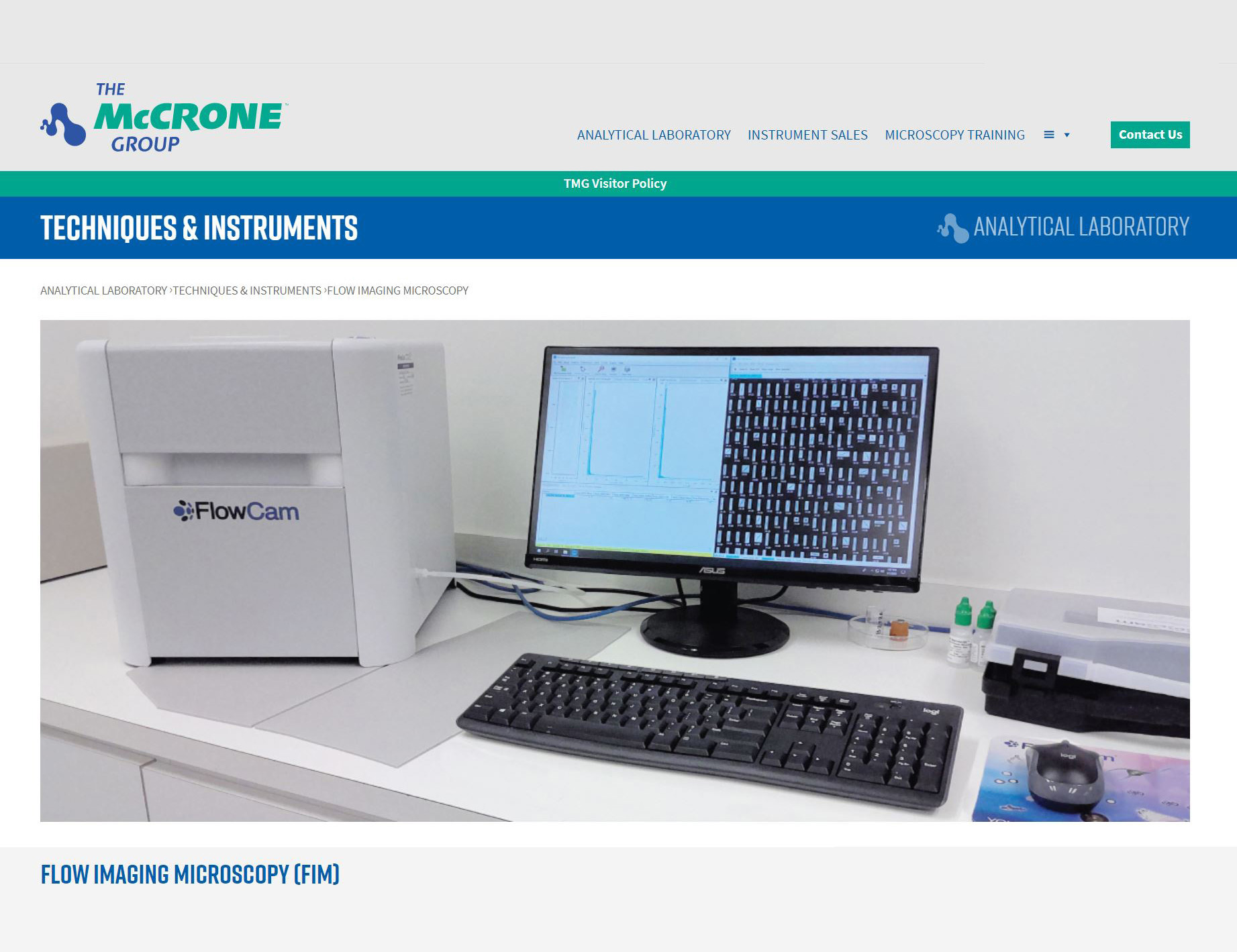McCrone Associates recently added a new analytical capability to their suite of lab instruments with FlowCam 8000. With this addition, they are now able to offer analysis services for labs without in-house flow imaging capabilities. Flow Imaging Microscopy (FIM) is an orthogonal method to light obscuration methods that offers high-resolution particle images and morphological data.
The compendial method for particle analysis in biotherapeutics has traditionally been Light Obscuration (LO) as required by USP <787> and <788>. However, a known limitation of LO is that it only provides raw size distribution data without any morphological information or visualization of the particles analyzed. Therefore, results often lead to more questions about the sample that must be answered, for example: Are the measured particles aggregates of inherent formulation components? Are they intrinsic artifacts such as air bubbles or silicone oil droplets? Or could they be extrinsic and potentially harmful contaminants? These questions can be answered confidently with particle images obtained by FlowCam.
Seeking to solve these common particle characterization problems and provide comprehensive data to their customers, McCrone Associates uses an array of state-of-the-art analytical techniques and instrumentation in their lab in Westmont, Illinois. They have expertise in advanced materials, food contamination, pharmaceuticals, chemicals, and now with FlowCam, an expanded capability for biopharmaceutical analysis.
As the pharmaceutical industry continues to shift from chemical compound therapies to engineered biological therapies, McCrone has noticed an increase in demand to visually confirm subvisible particles (including aggregates of liposomes, cellular matrix aggregates, and contaminant particles) at the microscopic scale. This shift has led to their recent acquisition of a FlowCam instrument.
![]()
Pictured above: a FlowCam collage file showing air bubbles, silicone oil droplets, protein aggregates,
and other potential foreign contaminants. The particle size range is displayed in microns beneath each image.
"Having the images acquired by FlowCam allows direct visual correlation of the particle types isolated and analyzed using our microscopy-based methods. This increases the level of confidence in the results and now permits us to provide clients with robust enumeration data for particle types morphologically identified by FlowCam. This corroborative quantitative enumeration data is a new element for us.” said Craig Schwandt, Vice President & Director of Industrial Services at McCrone.
Adding FlowCam to McCrone's collection of analytical instruments means that the anomalies observed in a light obscuration analysis can be more thoroughly investigated by flow imaging microscopy. Particles can be viewed, selected, and sorted based on their characteristics, including size and morphological features. This is very useful when investigating potential anomalies because a size range can be selected from the size distribution, and the particle images for all the particles within that size range can be viewed. The ability to visualize specific particles throughout the distribution makes it possible to answer questions regarding anomalies, aggregation, and foreign particle contamination. Characteristic images of particle types of interest can also be archived and compared to past or future samples as a way of tracking the recurrence of specific contaminants.
Since implementing FlowCam, McCrone can now combine flow imaging microscopy with particle identification. Given that their traditional starting point for particle identification is optical microscopy of the particles of interest, they can search for particles of interest identified by FlowCam using a light microscope and prepare them for identification by other methods, such as FTIR spectroscopy.
By leveraging both flow imaging microscopy and their expertise in particle identification, McCrone has improved their ability to answer the challenging questions that often arise in particle investigations.
Interested in having your particles analyzed by our partner?
Contact McCrone to inquire about sending a sample for analysis.











